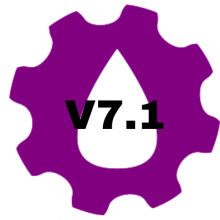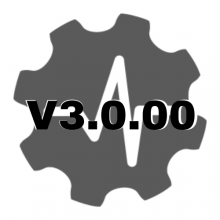Gen3 PLTs Inflow Profiling
New SPE publication with Shell and Openfield Technology
ISP in collaboration with Shell and Openfield Technology published a SPE paper
Third Generation Production Logging Technologies Enhance Inflow Profiling in Deepwater Gulf of Mexico Reservoirs.
Download link
https://www.onepetro.org/conference-paper/SPE-196188-MS
Abstract
This paper discusses the effectiveness of the third-generation (Gen3) Production Logging Tool (PLT) technology which incorporates the use of co-located digital sensors for simultaneous acquisition of flow data. Case studies are provided which demonstrate that this technology is a step-change in the application of digitalization to a down-hole sensor platform which provides the most accurate characterization of the flow condition at each depth surveyed. The resulting data allows for much improved processing which is also described. The probabilistic interpretive model used in the processing has been updated to incorporate this and future developments in PLT architecture.
Planning, execution, and analysis of data for the wells is described in detail. Due to the significantly shorter configuration of Gen3 tools, safety at the wellsite is enhanced by allowing for a much-simplified surface rig-up. One well was logged in surface readout (SRO) mode while data in the other two were recorded in the downhole tool’s memory for retrieval at the surface at the end of operations. This flexibility in logging modes optimizes operations by addressing the needs of the operation teams.
Three Deepwater Gulf of Mexico producers logged with the Gen3 PLT are described. In each case, a clear path forward is provided for optimal management of the reservoirs through effective production management.
The first generation (Gen1) of PLT provided a single discrete measurement for each sensor along the tool assembly’s length, resulting in long tool assemblies and measurements taken at different points along the flow path. This approach had several drawbacks: long toolstrings, point sensors only provided a measurement at a single point in the cross-section of the flow, and measurements were not acquired simultaneously at each depth logged. The second generation (Gen2) of PLT was an improvement as sensors were arranged as an array enabling multiple measurements to be made at a single depth but were still long and not all were optimally arranged to capture data in the path of flow. The Gen3 PLT is one-tenth the length of the Gen1 versions and roughly one-third of the shortest Gen2 tools. Digitization allows for direct measurement of flow conditions and rapid interpretation of results. In multi-phase flow and deviated wells, the co-location of sensors in a spatial geometry provides the optimal information with which to create a fully accurate picture of the downhole flow.
Authors
Glenn Donovan (Shell) | Sagar Kamath (Shell) | Elizabeth Tanis (Shell) | Linda Abbassi (Openfield Technology) | Alain Gysen (ISP)




